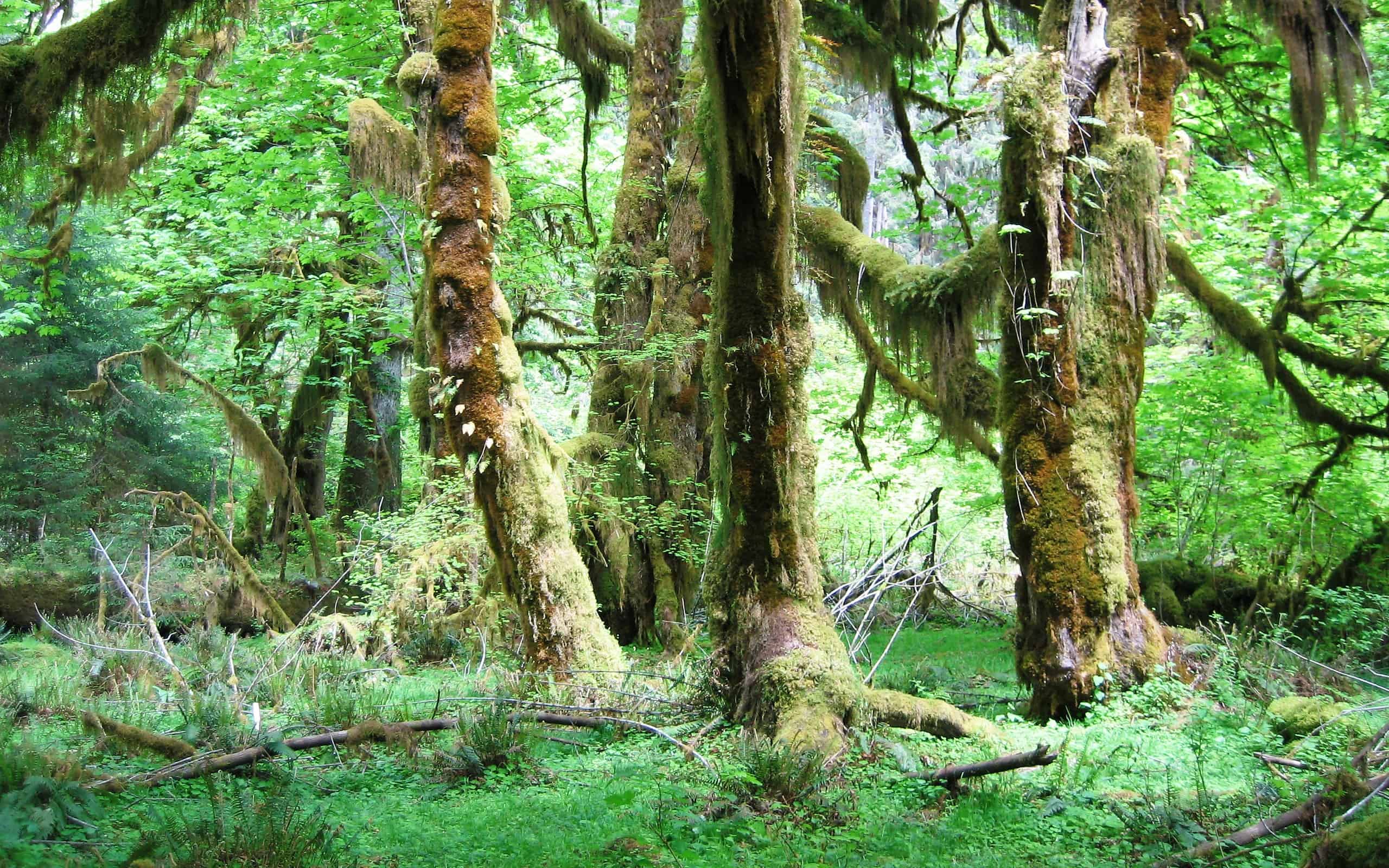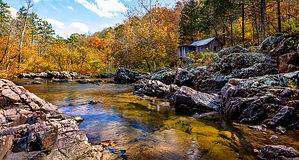Forests play a vital role in people’s lives that no one ever thinks about. This particular biome spans over one-third of the earth’s land surface. Forests provide many of the resources that people use every day. There is not a single home that does not have something that was derived from a forest. Also, forests carry out entire ecosystems of plant and animal life.
Forests also provide the people with clean air. The trees will absorb carbon dioxide and remove other harmful pollutants from the air, all while pumping out oxygen. Forests naturally create purified water by reducing soil erosion and filtering out anything harmful. These areas also give us lifesaving medicines. More than a quarter of modern medicine derives from the forest.
With all the amazing things these trees can do, here is a list of 13 of the oldest forests still covering the world today.
1. Tongass National Forest, Alaska

Tongass National Forest covers 500 miles of southeastern Alaska.
©iStock.com/ad_foto
The Tongass National Forest is the largest national forest in North America. This area spans approximately 17 million acres across the Southeast of Alaska and is home to some trees between 800 and 1,000 years old. Guests can encounter many different animals while exploring this national forest. People can see spawning salmon, bears, eagles, and even glaciers. This is truly a way to experience “wild” Alaska.
2. Yakushima Forest, Japan
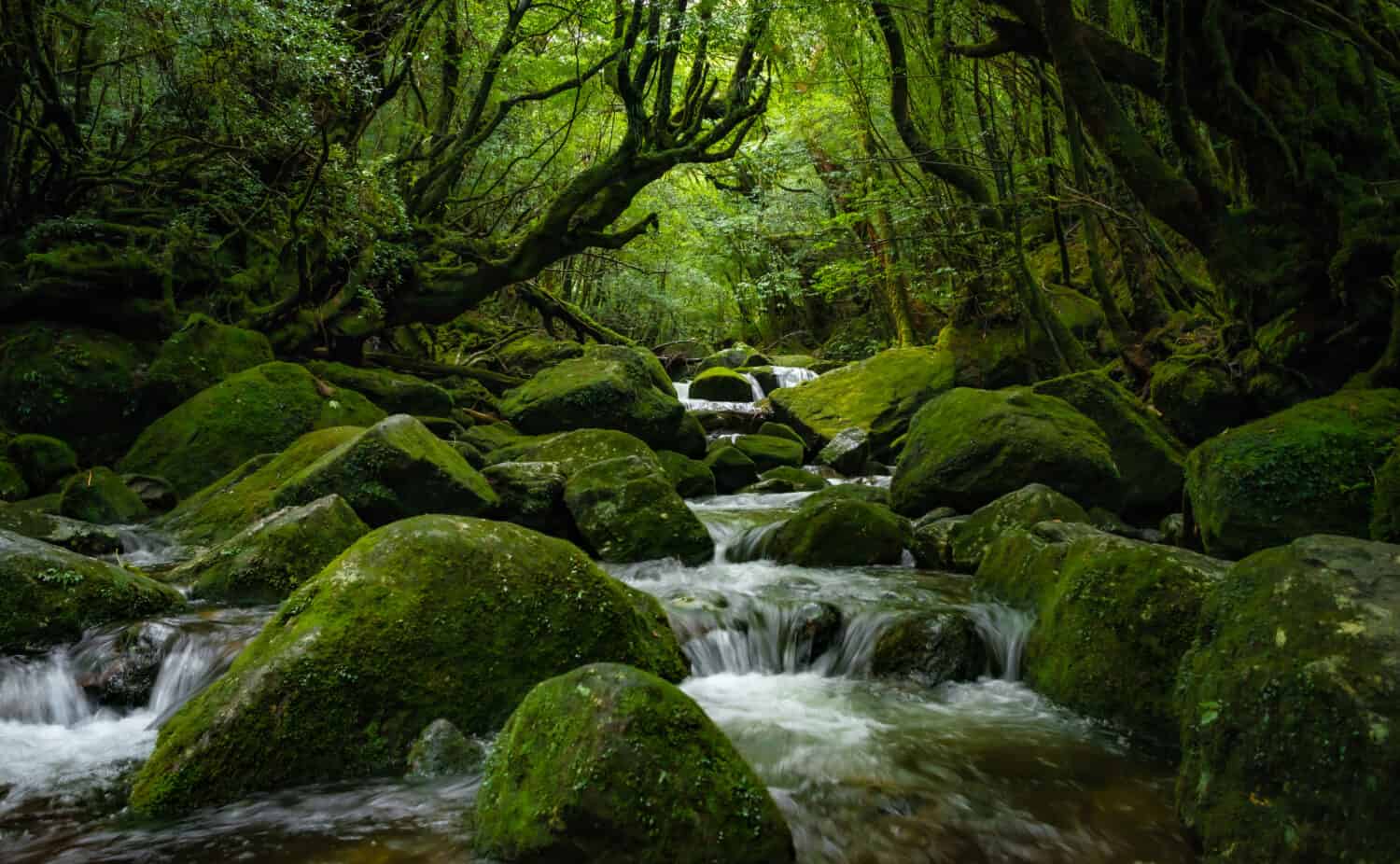
Kyushu, Japan, is home to Yakushima.
©Nakasaku/Shutterstock.com
Yakushima Forest is on an almost perfectly round island in Kyushu, Japan. The Yakushima cedar trees (Yaku-sugi) are some of the oldest trees in the area, ranging from 1,000 to 7,000 years old. This part of Japan became a UNESCO World Heritage Site in 1993 and is said to be straight from a fairy tale. Yakushima Forest was also the inspiration for Studio Ghibli’s film Princess Mononoke.
The diverse ecosystems within this area add to the allure of a fairytale. The forest ranges from cool-temperature highlands to subtropical lowlands and even places where it can snow. Some of its most well-known animals are rounded out in the forest. They have Yakushima macaque monkeys and spotted white sika deers.
3. Caspian Hyrcanian Mixed Forests, Iran

The Caspian Hyrcanian is 25 to 50 million years old.
©Faraz Habiballahian/Shutterstock.com
The Caspian Hyrcanian Mixed Forest is located on the coast of the Caspian Sea and the northern slopes of the Alborz Mountains in Iran. This forest spans 21,300 square miles and is one of the most ancient forests in the world. The history of the forests dates back to 25 to 50 million years ago. There are 180 bird species in the Hyrcanian region. A few of these include the Semi collared Flycatcher, Eastern Imperial Eagle, Steppe Eagle, European Turtle Dove, European Roller, and Caspian Tit. Around 58 mammals have been recorded across the region, including the iconic Persian Leopard and the threatened wild goat.
4. Bialowieza Forest, Belarus and Poland
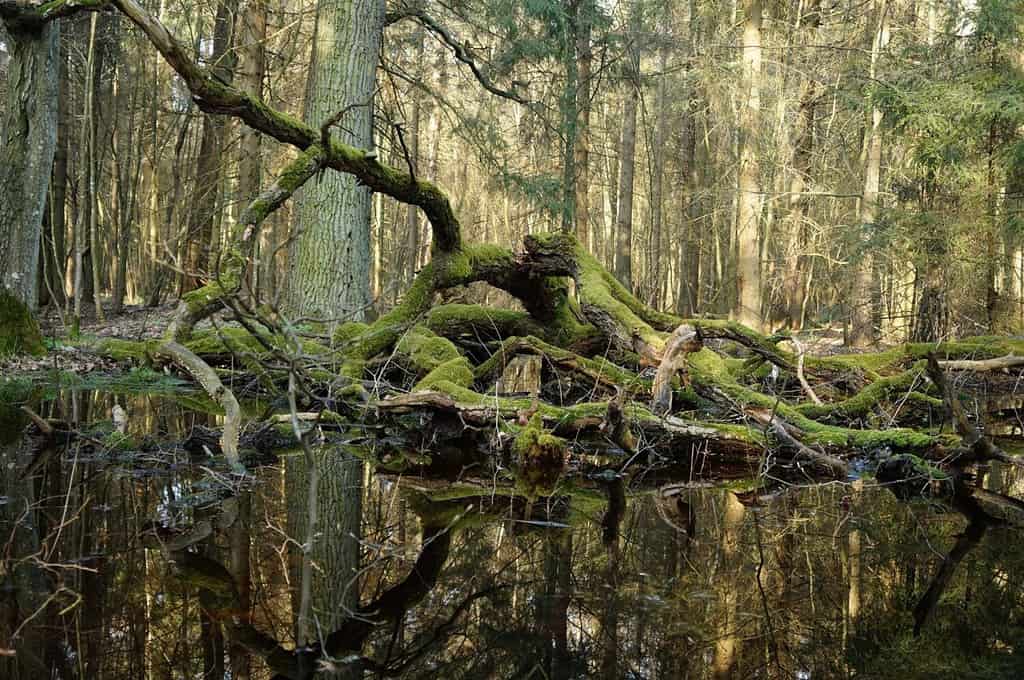
Bialowieza is the largest forest in Europe.
©KRZYSZTOF PARZYCH/Shutterstock.com
Located on the borders of Poland and Belarus, Bialowieza Forest is the oldest and largest forest in Europe. Some of the trees in this area are over 600 years old. This land has been able to keep its natural beauty because it has remained untouched throughout its existence. With an area of 1200 square miles, this forest is home to many types of wildlife. It is home to European bison that has been brought back from the brink of extinction.
5. Daintree Rainforest, Australia

The Daintree in Australia is the oldest rainforest in the world.
©iStock.com/AustralianCamera
Off the Northeast Coast of Queensland, Australia lies the Daintree Rainforest. At around 460 square miles, this forest is one of Australia’s largest continuous rainforest areas. Daintree is estimated to be 180 million years old, which makes it one of the oldest forests in the world. Daintree also has a huge diversity of plant, bird, insect, and animal species. Some of these creatures, like the bat and butterfly, comprise 65% of the continent’s species.
6. Tarkine Forest, Australia
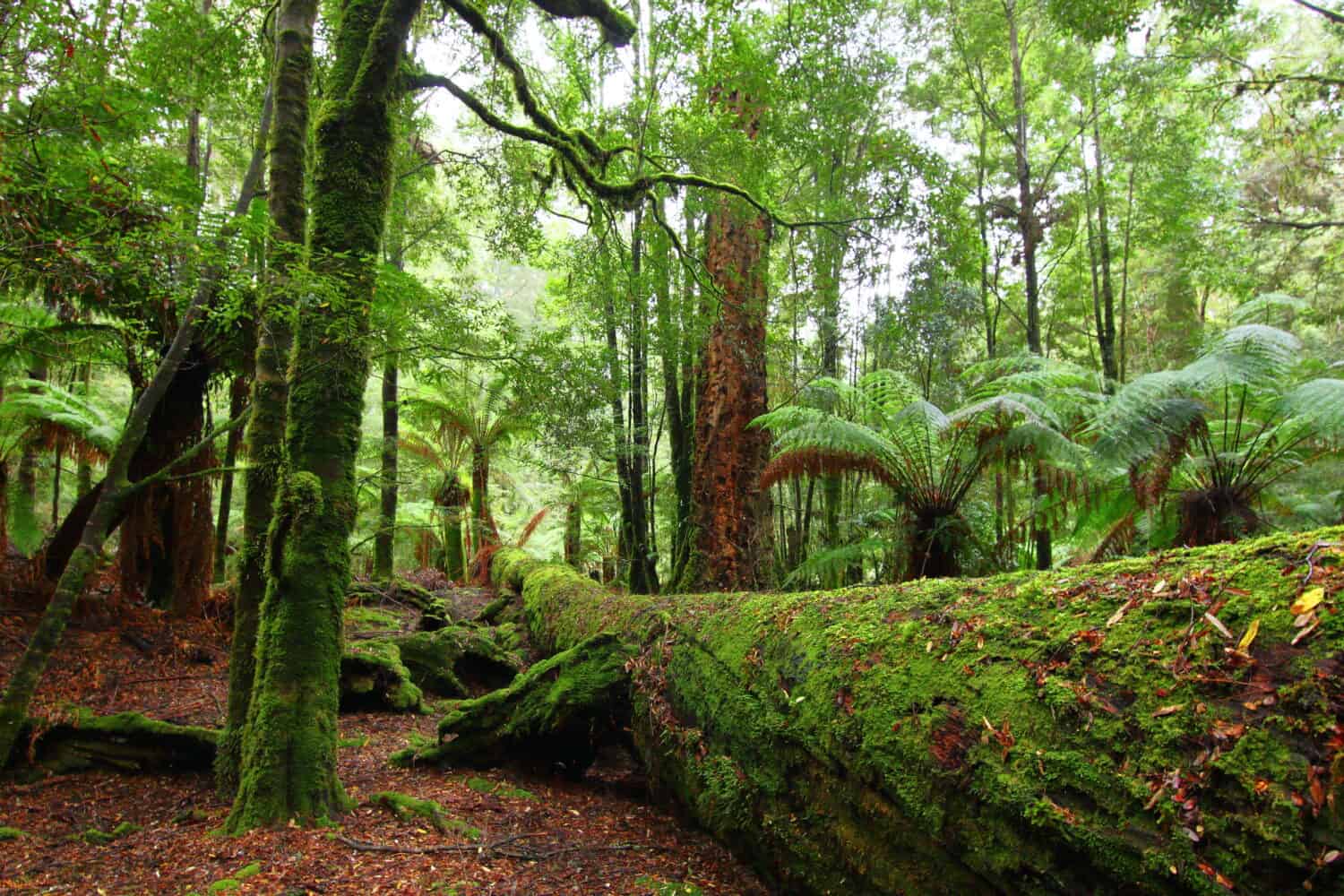
The Tarkine Forest is the second largest in the world.
©Kazuki Yamakawa/Shutterstock.com
In the northwest region of Tasmania lies the Tarkine Forest. This is Australia’s largest temperate rainforest and the second largest in the world. This area is home to the Huon Pines. Some of which are 2,000 years old. These are some of the longest-living tree species in the world. The Tarkine Rainforest is also home to the world’s largest freshwater crayfish, Astacopsis gouldi, known as the Giant Freshwater Lobster.
7. Amazon Rainforest, South America
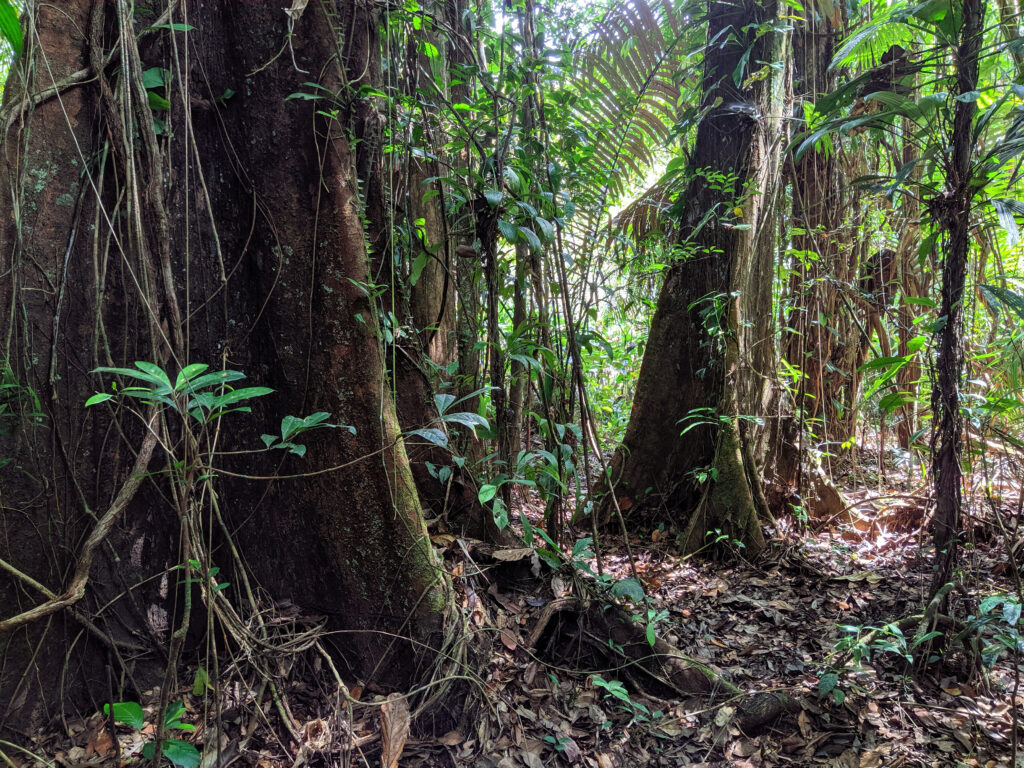
This forest is one of the biggest in the world.
©Petr Muckstein/Shutterstock.com
The Amazon Rainforest is one of the most well-known rainforests in the world. It is approximately 50 million years old and spans over two million square miles. The Amazon makes up over half of the earth’s remaining forests at this size. Inside, there are billions of trees and millions of insects. There are also thousands of different birds and animal species within this biome.
In addition to all of that, there is still a large number of indigenous people that live within the Amazon. Over two million people, 350 different ethnic groups, more than 60 remain largely isolated.
8. Waipoua Forest, New Zealand
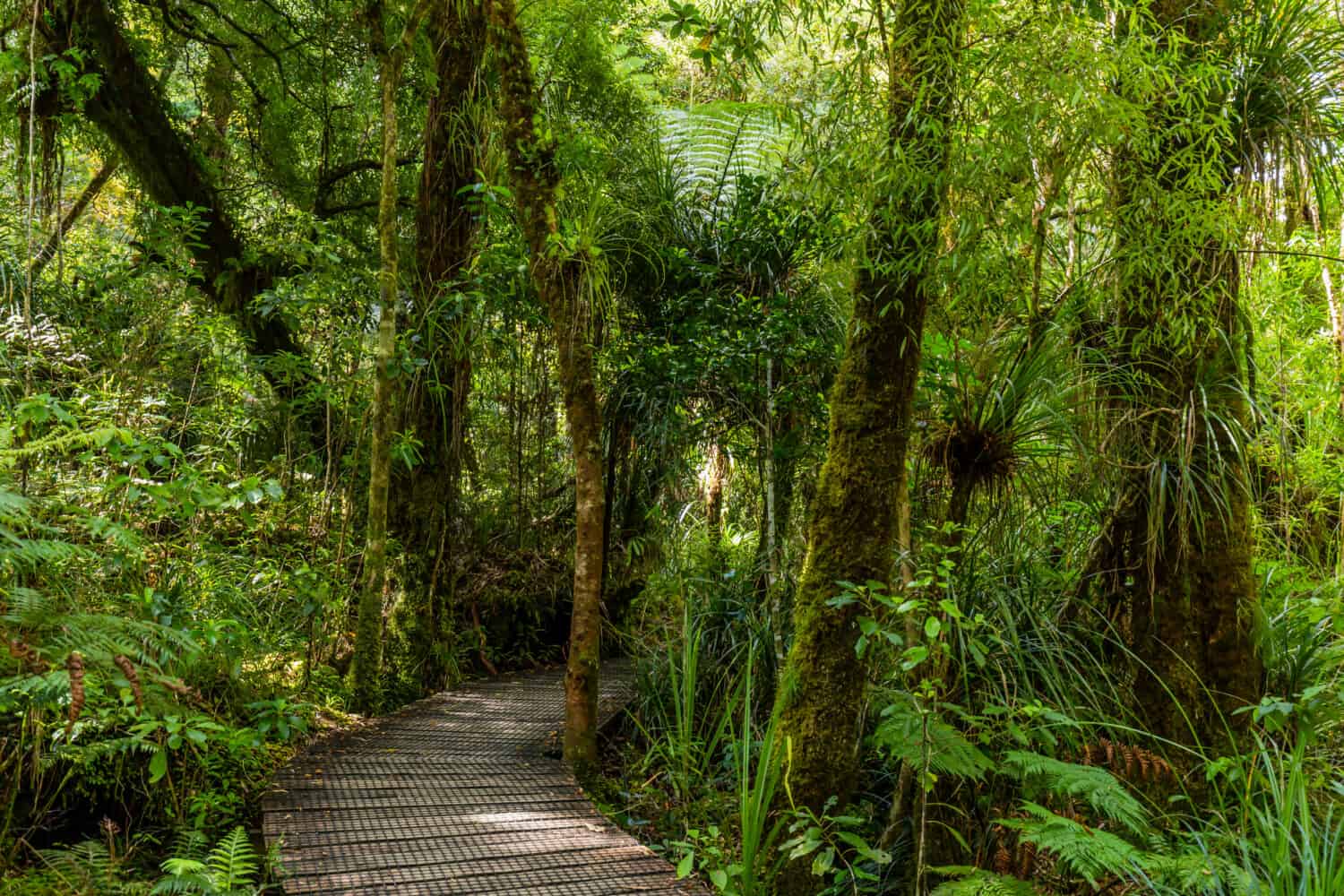
Some of the largest Kauri trees reside here.
©NataliaCatalina.com/Shutterstock.com
Waipoua Forest resides on the west coast of the Northland region of New Zealand’s north island. This forest preserves some of the largest living kauri trees. The Tāne Mahuta is named the “Lord of the Forest” and is estimated to be 2,000 years old. Te Matua Ngahere is also known as “Father of the Forest” and has a girth of about 52 feet.
9. Borneo Lowland Rainforest, Borneo
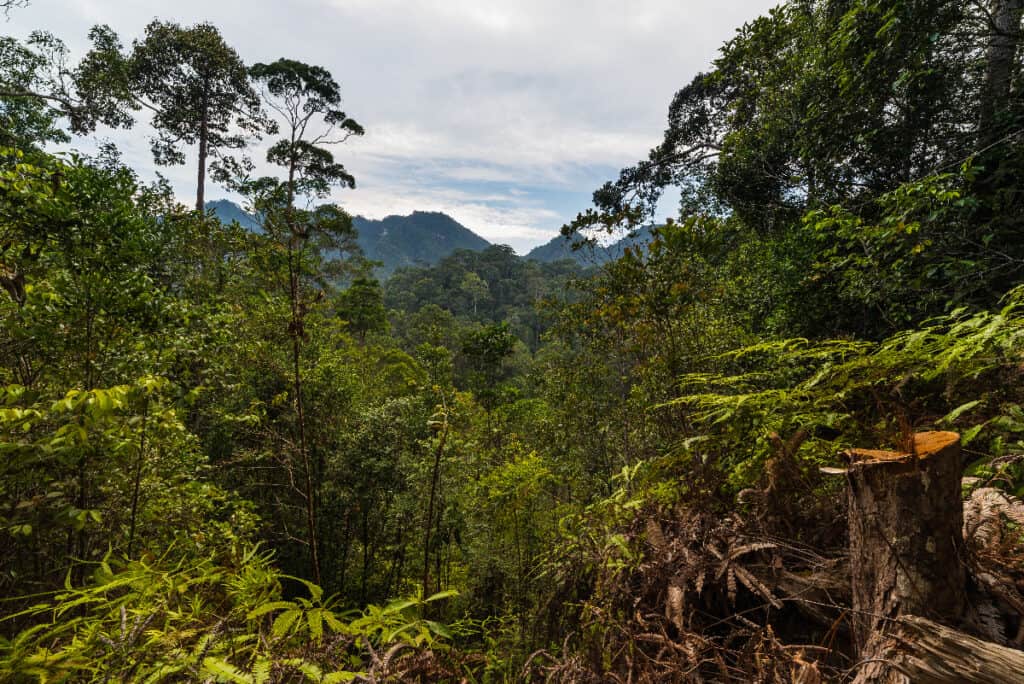
The Borneo Lowlands are tropical rainforests.
©Fabio Lamanna/Shutterstock.com
The Borneo Lowland Rainforest covers a good portion of the island of Borneo and is estimated to be over 100 million years old. This forest spans an area of 165,000 square miles. It is one of the world’s most biodiverse rainforests, hosting up to 15,000 plant species and hundreds of bird species.
This rainforest is also home to the Bornean Orangutan, which is only one of two remaining species of Orangutan worldwide. Sadly, the Borneo Rainforest is slowly being wiped out due to intense deforestation.
10. Ancient Bristlecone Pine Forest, California
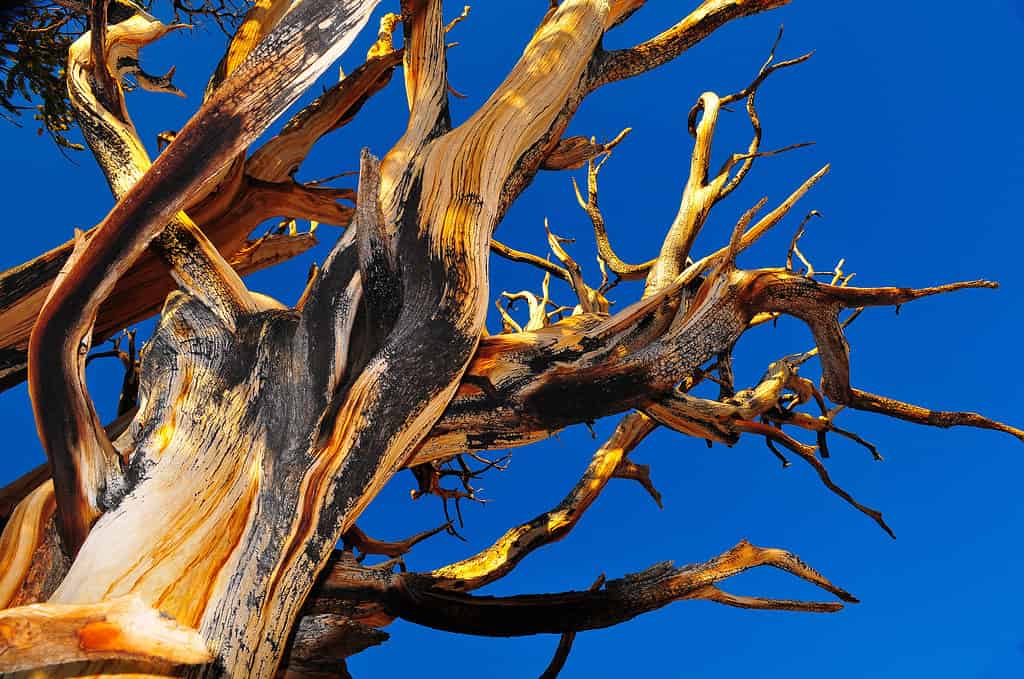
Detail of a bristlecone pine tree at the Ancient Bristlecone Pine Forest, Bishop, California.
©iStock.com/Pedro Carrilho
The Ancient Bristlecone Pine Forest lies within California’s Inyo National Forest. At over 5,000 years old, this forest is home to many of its namesake trees. Tucked away in the White Mountains are roughly 43 square miles of trees with twisted branches and trunks. There are several other notable trees in Bristlecone, like the Methuelah and the Patriarch Tree, the world’s largest bristlecone pine. While the forest is open to visitors throughout the year, a portion of this area is not publicly available for protection.
11. Pando, Utah

The Pando clone of aspen trees in Utah is from a clonal colony.
©Reuben Jolley Photography/Shutterstock.com
Pando is 106 acres inside the Fishlake National Forest in Utah. At over 80,000 years old, it is a clonal colony. This means that each tree is a clone of the original tree, making this area one giant, living organism. This enormous grove of quaking aspens is one of the largest single-living organisms in the world. It was given the name Pando because, in Latin, it means “I spread.”
12. Taman Negara, Malaysia
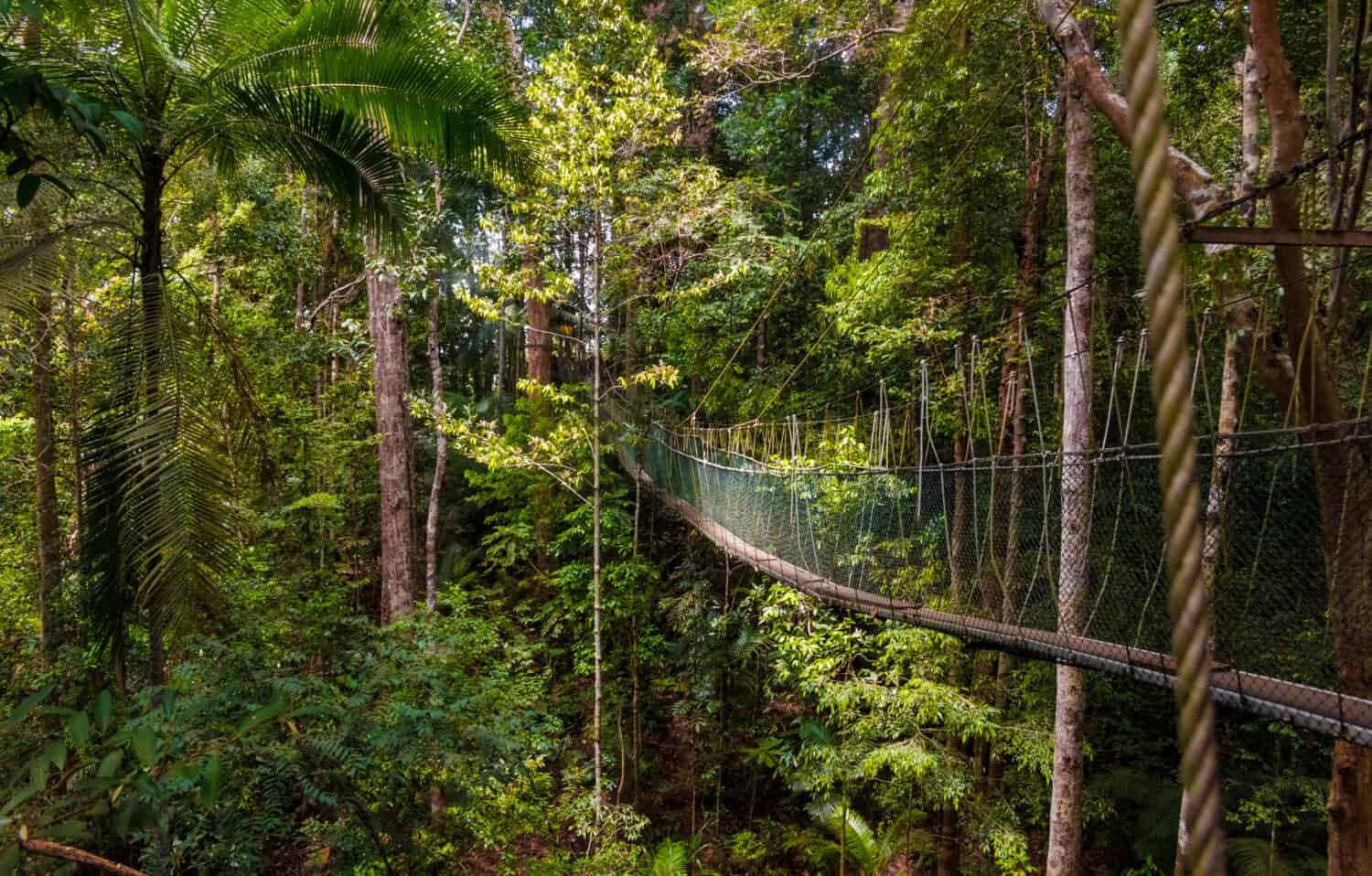
The Taman Negara’s suspension bridge spans over 1600 feet.
©H-AB Photography/Shutterstock.com
The Taman Negara is estimated to be over 130 million years old and has been dubbed the world’s oldest rainforest, even though the Daintree Rainforest is older. One of the most famous things about this rainforest is the Taman Negara Canopy Walk. This is a 1,673-foot-long suspension bridge spanning across Taman Negara’s high treetops. This forest has an area of almost 1700 square miles and is a part of three separate states. Established in 1938, Taman Negara was the first protected area in Malaysia.
Theodore Rathbone Hubback was an English engineer, conservationist, and author in Malaysia. He lobbied for the Sultans of Kelantan, Pahang, and Terengganu (during King George’s Silver Jubilee) to each set aside a piece of their lands to form Taman Negara.
13. Kakamega Forest, Kenya
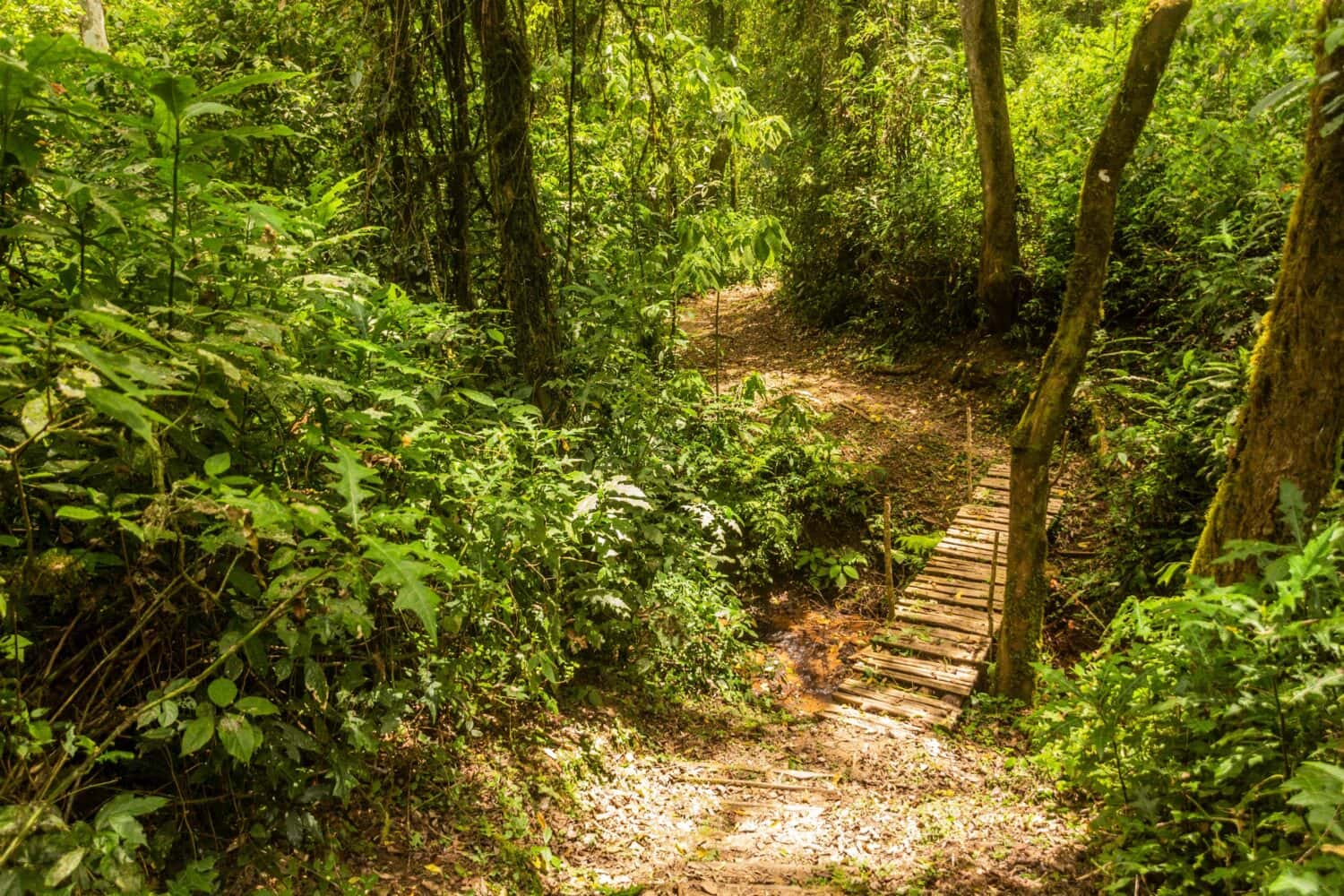
This rainforest is the only one in Kenya.
©Matyas Rehak/Shutterstock.com
Kakamega Forest is a little over two million years old and is the only rainforest in Kenya. This area used to stretch from West Africa to East Africa. But sadly, it now sits at around 92 square miles. Despite its size, Kakamega is home to many animals and plants you cannot find anywhere else. Kakamega has over 400 species of butterflies, seven species of primates, 360 species of birds, and 380 species of plants. However, many of these plants are medicinal and used to cure diseases like Malaria, cancer, and the common cold, among other things.
Thank you for reading! Have some feedback for us? Contact the AZ Animals editorial team.

